Physical
Training
Aug 2003
Using the French Cane for Fitness
Copyright © Frederic Morin
2003. All rights reserved.
The cane is a weapon which is used in a combat sport that calls on a
wide spectrum of movements and complete mobilization of the muscles of
the body. The techniques of this sport can serve as a basis for fitness
training.
General Principles:
The French “canne d’arme” (or walking stick) is a wooden (chestnut)
stick 95 cm long, with a diameter of 1.5 cm at the tip and 1.8 cm at the
base. For this type of exercise, relatively light canes (100 and 150 grams)
are preferred.
For each movement, note the following principles:
-
the cane is held in one hand, near the base (without taking up too much
of the stick)
-
the movements are full, sweeping movements which are, above all, carried
out with the arm fully extended
-
the starting position is always "en garde": the grasp defines the guard
(for example: right hand at the base of the cane, right foot slightly advanced),
the body facing an imaginary opponent. In this way, each move of the cane
implies a transfer of weight either to the front leg or to the back leg
(balancing the weight of the body)
-
the impact areas are the head, the sides and the tibias; in this case,
make a front or back lunge
-
each movement is made without violence and without force of impact – this
is a sport.
Before a session, begin with a warm-up involving the muscles of
the entire body, and then proceed to a warm-up of specific areas (e.g.
the wrists, by making flourishes with the cane, moving the cane behind
the back, etc.).
During a fitness session, it is advisable to use a metronome so that
you can measure the number of beats per minute.
Start with repetitive series of exercises in order to familiarize yourself
with the weapon. The usual progression is to combine the various moves
and impact areas, and add leaps, voltes, etc.
The French cane is associated with six movements: “brisé”, “latéral
extérieur”, “latéral croisé”, “enlevé”, “croisé
tête” and “croisé jambe”.
-
“brisé” begins with a vertical flourish. The impact area is above
the head. The right arm (for a right guard) produces a forward-rearward
piston then forward to touch. The cane turns in the hand and makes a three
quarter rotation. It is important to make sure of the vertical trajectory
of this stroke.
-
“latéral extérieur” is a stroke with an horizontal flourish
made above the head. The impact area is located on the sides of the opponent’s
head. The stroke is armed when the tip of the cane is pointing toward your
opponent. The cane is held above the head, with the right hand behind the
axis of the shoulders.
-
for “latéral croisé”, the tip of the cane always points toward
the opponent but the arm is crossed in front of the face. For the “latéral
extérieur” and the “latéral croisé”, you can touch
the right or left side of the head, the sides, or the tibias by lunging.
-
“Croisé tête” is made with the tensed arm making a left circle
to the head of your opponent.
-
“Croisé jambe” is the same stroke in reverse, aimed at the opponent’s
tibia.
-
Lastly, the “enlevé” is performed with a reverse flourish to the
opponent’s tibias.
It is important to set various sequences, connected by preserving the same
rhythm and while taking care to respect all the points above.
The first series will run through each movement described above and
should take at least 30 to 45 seconds. The full session should last 10
to 15 minutes. Finish by stretching the arms and shoulders, and wind down
for 5 to 10 minutes.
This kind of exercise, because of its intensity and variety of the movements,
offers some insight into handling the French cane in the context of an
atypical and rhythmic cardio-athletic workout.
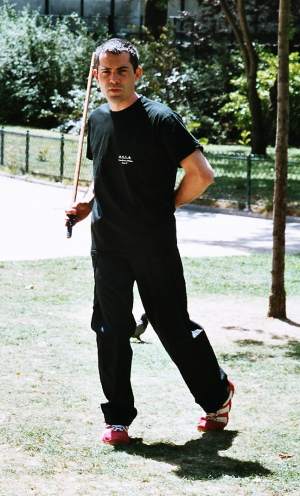
imm09: beginning of "enlevé"
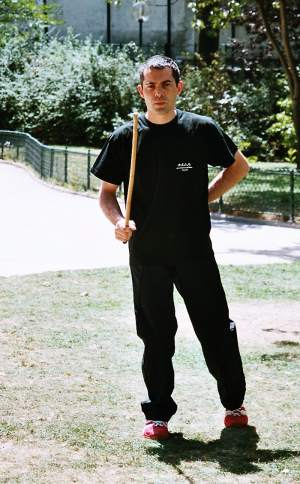
imm07: beginning of "brisé" - step 1
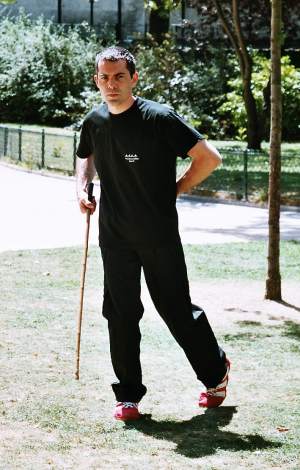
imm08 : beginning of "brisé" - step 2
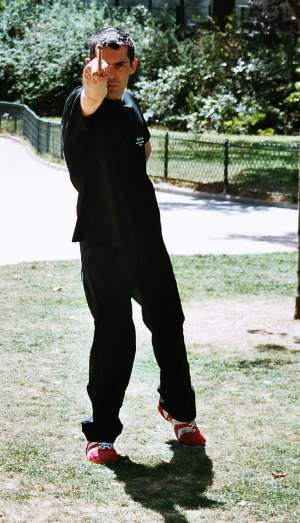
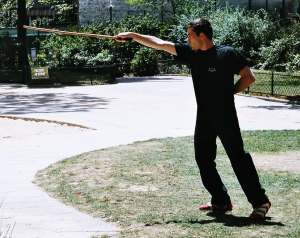
imm10-11: end of a "brisé" (see the arm in prolongement of
the canne)
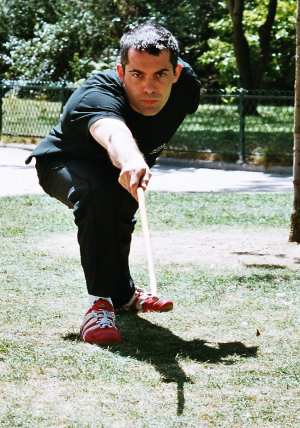
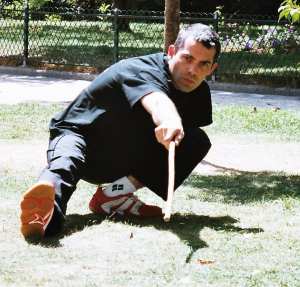
imm17 - 18: fenges ("fentes" in french)
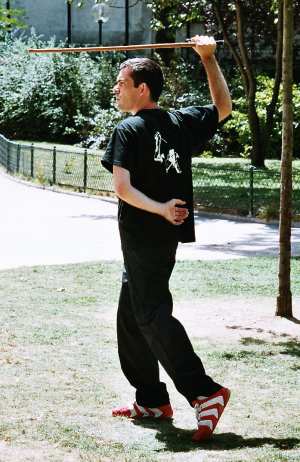
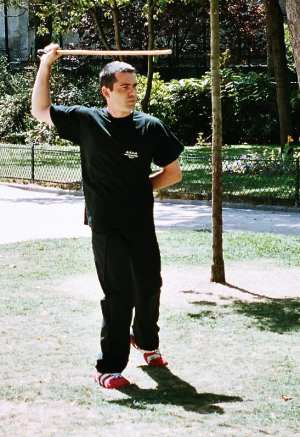
imm19-15 : "latéral extérieur" armed
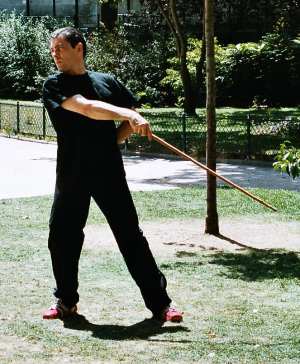
imm20 :beginning of a "croisé tête"
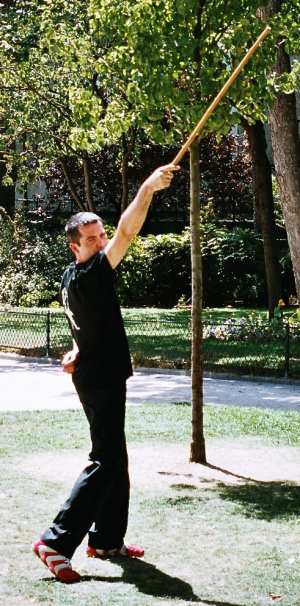
imm14: end of a "croisé tête"
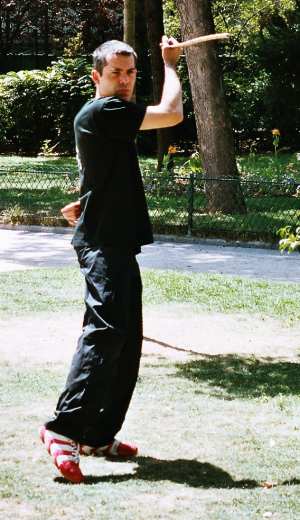
imm12: "latéral croisé" armed
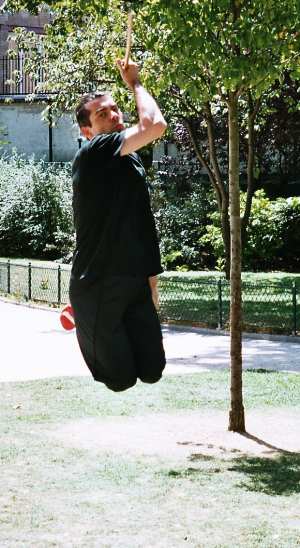
imm22: "latéral croisé" armed with a jump
Frederic Morin is French instructor of cane and baton – Manager
of ASCA Paris FRANCE. For more information go to http://www.batoncanne.com/
Our
Sponsor, SDKsupplies













